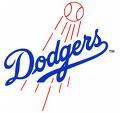Six years ago, I wrote this -- something I had to do at the time.
~17~
I am a space-eyed 9-year-old. I come home after a tough day in school (it takes a lot of effort to terrorize a seasoned 4th grade teacher). My sister tells me of the tragic fire in Florida. Three astronauts of Apollo 1 have died. America may not get to the moon by the end of the decade. This 9-year-old, who at first doesn’t believe his sister (older sisters do those kinds of things, you know), wanders out to the front porch. My first thoughts – perhaps I can still see the smoke from the fire. Then it will be real to my mind. But Cape Kennedy is over 3,000 miles away. (I did know enough geography to look to the southeast!) I get to watch the moving funerals, which remind me of President Kennedy’s just over 3 years earlier. Walter Cronkite is fatherly, supportive, calm, and tells us that yes, we will make it to the moon. My faith in the space program is renewed. I still don’t trust my sister (wink).
Nearly two full decades have passed. Americans landed on the moon. The “Successful Failure” of Apollo 13 showed the world that space can be beaten. I am still very much space-eyed, but now 28 and searching for a career. Home for the day, I have to hunt for a live picture of the launch, finally finding it on cable TV’s CNN. I curl up under a blanket to watch a teacher lift off into space. (While I wouldn’t start college for another year yet, the idea of teaching as a career was just beginning to percolate in my consciousness.) I felt a small bit of camaraderie with the folks at Kennedy. It was a bitter cold day there, too. (This was a Southern Californian's "bitter cold" day, probably about 55° F) America has become complacent with the space program. The sight of fragile humans, strapped atop millions of pounds of high explosive in a barely controlled series of explosions, is as commonplace as the night’s basketball scores. As the image of that compellingly beautiful but monstrously hideous white “Y” formed in the brilliant blue Florida sky unfolds before me, I’m stunned. The solid rocket boosters skittering out of control makes me think of pictures of the earliest days of the American space program. They called them “Puffniks”. We couldn’t do anything right. The Russian Bear was master of the Cosmos. It was depressing. The words “obviously a major malfunction” came over the speaker. A huge understatement that would haunt the nation as TV news finally awoke. This day would be compared with December 7, 1941 and November 22, 1963. We later learned that that national malaise, spread even to our brilliant Rocket Scientists, was in part to blame for the destruction of Challenger. The rush to make spaceflight a profit-making, rather then a knowledge-growing endeavor would cost noble lives. In 1998 I achieved a long-anticipated dream, and got to visit Kennedy Space Center. The Astronaut Memorial left me speechless. The sight of Pad 39A, the huge, flag-bedecked Vertical Assembly Building and familiar countdown clock brought back a flood of memories. I mourned and rejoiced at the same time.
The wonder hasn’t left my eyes, or my heart. I’m now a teacher, following Christa McAuliffe’s pledge to “touch the future”. Just three days ago, I spent valuable class time to recount to my students the feelings I experienced those 17 years earlier. I fear that my story, with images as fresh to me as yesterday, must have seemed like tales of Camelot, or even dinosaurs, to my charges. Then came Saturday morning. I woke early, with a full day of housekeeping and school paperwork ahead of me. I was watching a rerun of M*A*S*H, finishing off my breakfast when a curious message scrolled across the bottom of the screen. “For breaking news on the Space Shuttle Columbia, tune to FOX News”. I knew the shuttle would be landing this morning. It was another historic flight. 16 days – longer than most shuttle flights, and full of science. No visit to the International Space Station, the recent routine for shuttle flights of late. The presence of an Israeli astronaut was noteworthy. His devotion evident by his bringing a Holocaust treasure (a tiny Torah smuggled into a death camp) into space with him. Like the rest of the world, I anticipated a smooth landing. But the first sight that I comprehended, before I was conscious of the words being spoken, was of white contrails, streaming down in ever spreading lines. The Shuttle doesn’t do that. That 9-year-old’s naïveté had long ago given way to the harshness of mature reality. Columbia had broken up. Astronauts had died again. As with many others, after the global mindset-changing events of September 11, 2001, I thought of the Israeli astronaut. What a coup for those devilish fanatics. But as the details trickled in, I quickly realized that this was no terrorist action. It was another “major malfunction.” As the day wore on, we could see the flotsam that was once a magnificent orbiter spread across the Texas countryside. The investigation began, data gathered, questions asked and theories floated (Cronkite, your soothing voice is sorely missed). I finally pulled myself away to complete some mundane weekend tasks – unexpectedly becoming a much needed tonic rather than mere chores. Writing is a catharsis. Time, and knowledge, will be the treatment.
17 stars touch the Face of God
In time, we will learn why. We will learn how. We will return to space.
The 17 will be joined by others. We will return once again.
We will grow. We will survive. We will reach the stars, together.
We will not forget the 17






